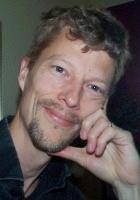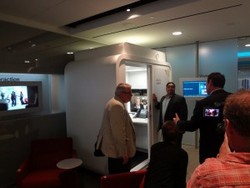
Redaktör:
Jens Ljunggren
Senaste nyheter
-
2023-10-30
Spowdi vinner utmärkelse för klimatsmart jordbruksinnovation World Economic Forum har utsett Spowdi till Top Innovator i dess Smarter Climate Farmers Challenge.…
World Economic Forum har utsett Spowdi till Top Innovator i dess Smarter Climate Farmers Challenge.… -
2023-09-20
En av Sveriges största solcellsparker planeras i Halland Statkraft lämnade förra veckan in anmälan om samråd, enligt 12 kapitlet 6§ miljöbalken, för att…
Statkraft lämnade förra veckan in anmälan om samråd, enligt 12 kapitlet 6§ miljöbalken, för att… -
2023-09-18
Ny avfallstjänst hjälper företag minska koldioxidutsläpp Stena Recycling lanserar en ny digital tjänst som ska ge företag mer kunskap om hur deras…
Stena Recycling lanserar en ny digital tjänst som ska ge företag mer kunskap om hur deras… -
2023-09-13
Göteborg först med batteri-swap för elmopeder Två innovationsprojekt har banat väg för en ny satsning inom mikromobilitet och logistik i…
Två innovationsprojekt har banat väg för en ny satsning inom mikromobilitet och logistik i… -
2023-09-11
Åtta av tio vill ha mer grönska i svenska städer Bevarandet av den biologiska mångfalden och ekosystemen har inte bara ett egenvärde, utan är…
Bevarandet av den biologiska mångfalden och ekosystemen har inte bara ett egenvärde, utan är… -
2023-09-08
Ekologisk höstmarknad i Järna 9 sept Nu på lördag den 9 september kl. 10-16 kommer vi vara med på Skillebyholms höstmarknad! Vi…
Nu på lördag den 9 september kl. 10-16 kommer vi vara med på Skillebyholms höstmarknad! Vi… -
2023-09-06
Ny kalkylator visar stora vinster med ekologiskt Genom att välja ekologiskt i matbutiken kan stora mängder bekämpningsmedel och konstgödsel stoppas.…
Genom att välja ekologiskt i matbutiken kan stora mängder bekämpningsmedel och konstgödsel stoppas.… -
2023-09-01
Stor outnyttjad potential i cirkulär ekonomi i Norden En förhållandevis liten andel av den nordiska industrin är i dag cirkulär och det finns stora…
En förhållandevis liten andel av den nordiska industrin är i dag cirkulär och det finns stora… -
2023-08-30
Var med och rösta fram Sveriges bästa klimat startup När ansökningstiden nu löpt ut för årets upplaga av Startup 4 Climate, en av Europas största…
När ansökningstiden nu löpt ut för årets upplaga av Startup 4 Climate, en av Europas största… -
2023-08-28
Världens största flytandegörningsenhet för biogas i Södertörn Biokraft passerade i torsdags en viktig milstolpe när den nybyggda anläggningen för flytandegörning…
Biokraft passerade i torsdags en viktig milstolpe när den nybyggda anläggningen för flytandegörning…







